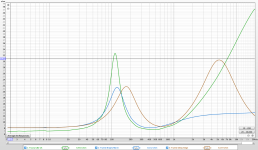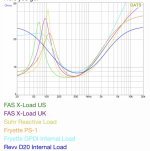Depends on what you mean by transparent. With a load box you're typically more concerned with feel than with sound. You can use a single 8ohm 100W resistor and call it a dummy load, but it will feel stiff and uninspiring. Most higher-end boxes (including the powerstation) use a reactive load, which has an inductive element to it aside from the resistive element.
A speaker is not a perfect load. It has a different impedance depending on the frequency of the input signal. A resistor, on the other hand, has the same impedance regardless of the input frequency. The goal of a reactive load is to mimic the imperfect response of a speaker for a more natural feel.
Now how important this is will depend on your use case; if you're going to be using the external power amp to drive speakers and that's the only use for it then you may not notice much of a difference. But if you're going to a direct out for recording or through headphones, you'll notice a different feel.



